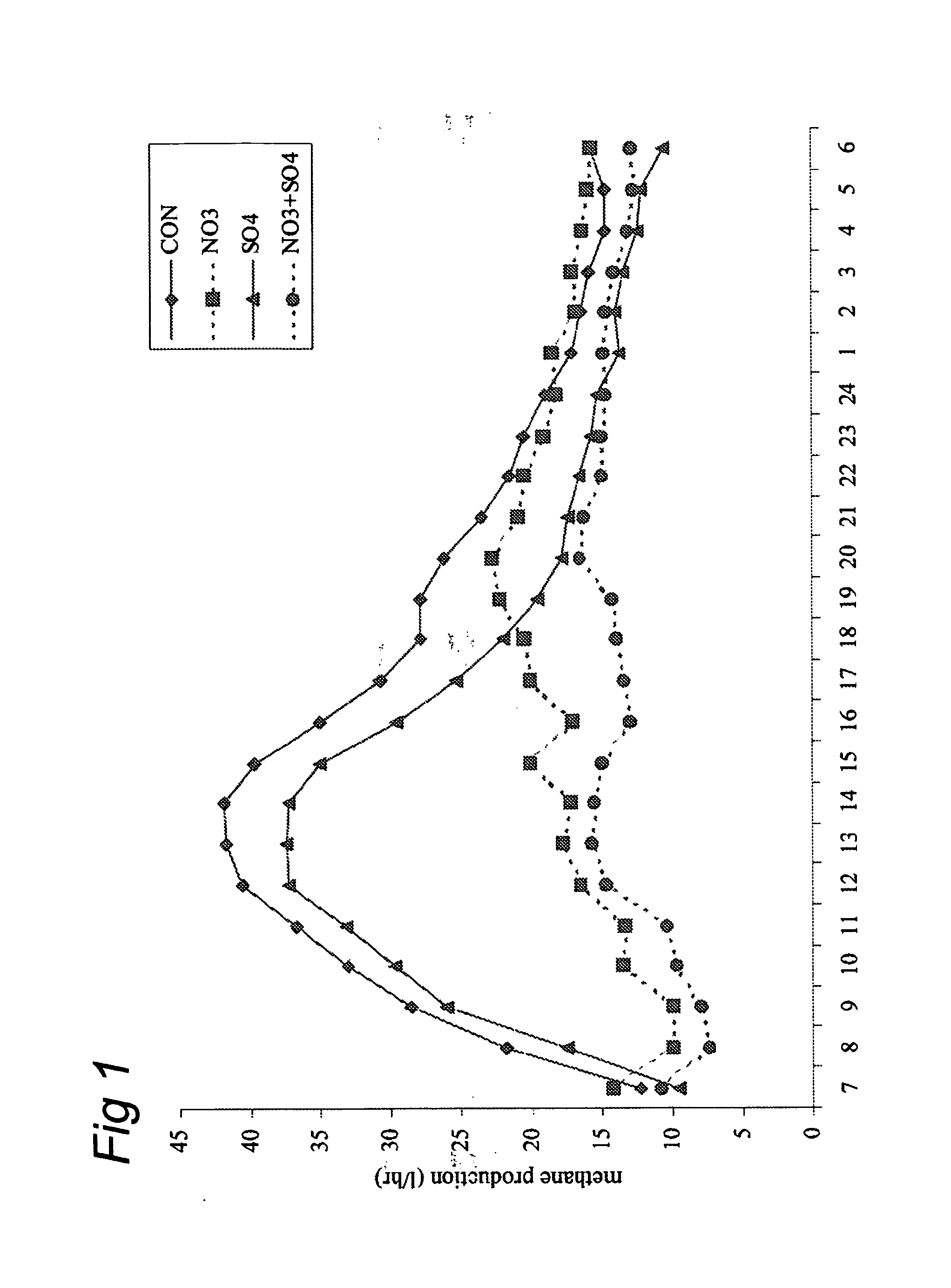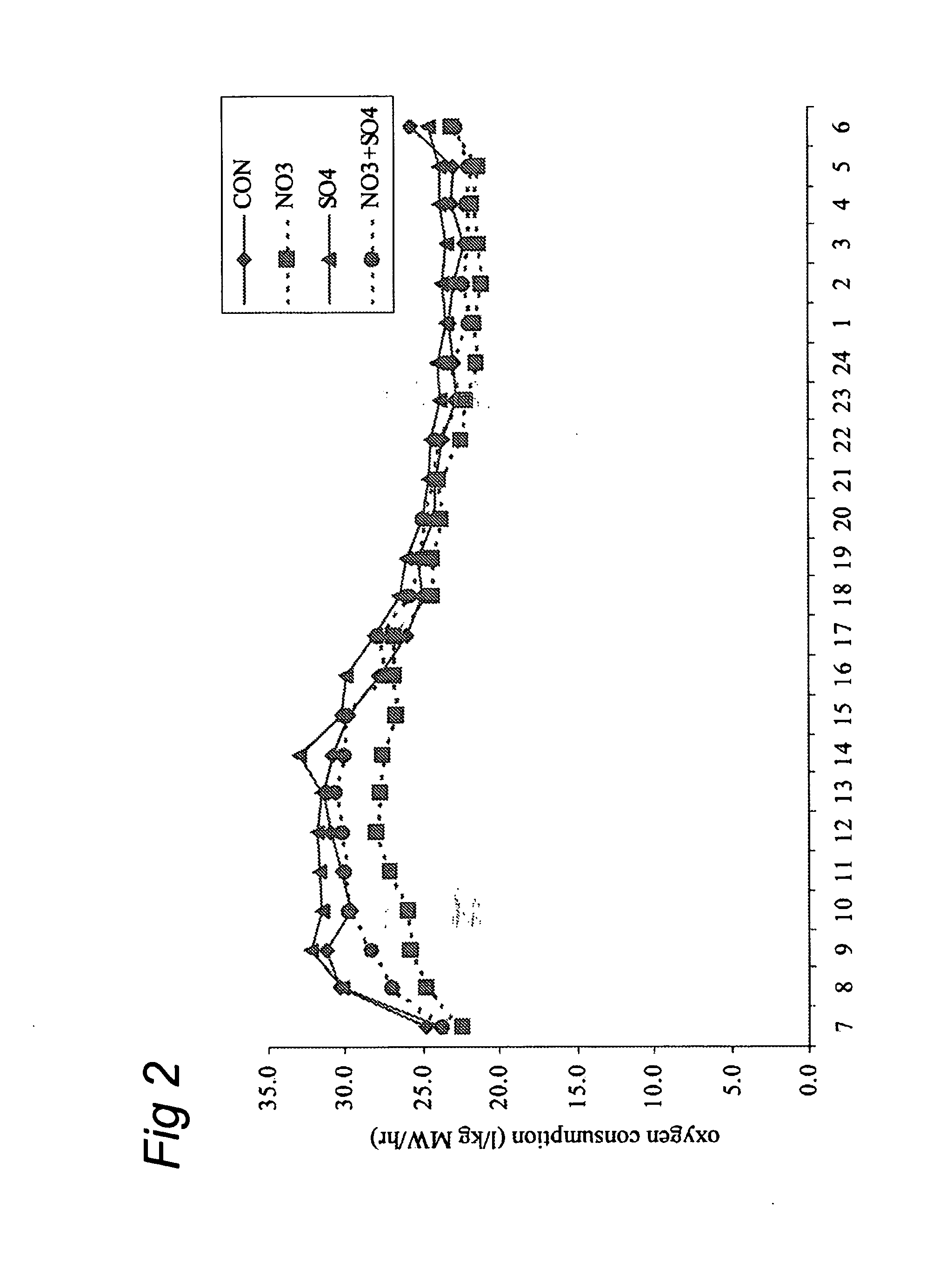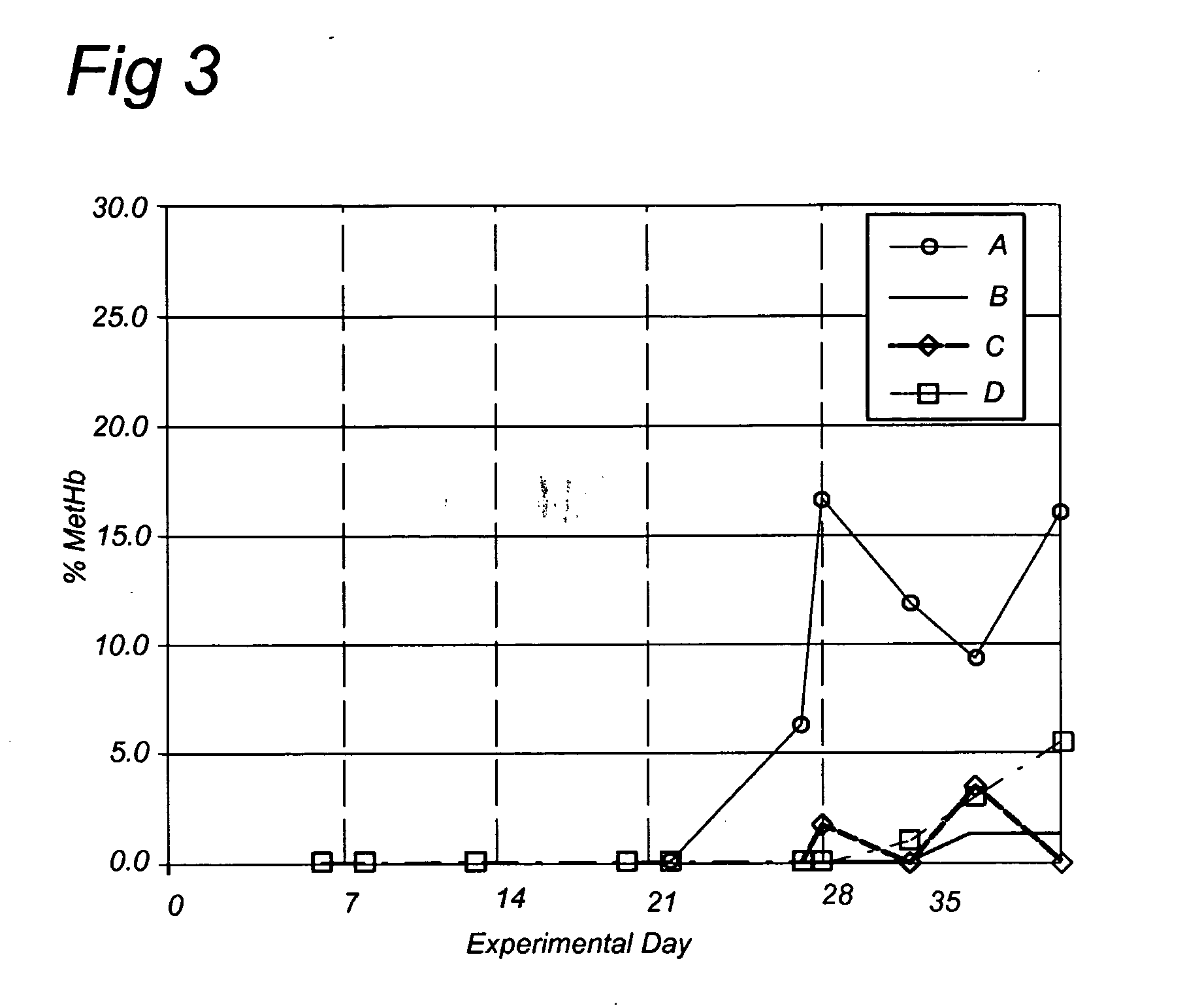Compositions for reducing gastro-intestinal methanogenesis in ruminants
a technology of gastrointestinal methanogenesis and compositions, which is applied in the field of compositions for reducing gastrointestinal methanogenesis in ruminants, can solve the problems of reducing the capacity of blood to transport oxygen to the tissues of animals, reducing the feed intake of animals, and failing to introduce reductive acetogenesis in the rumen, etc., so as to reduce the amount of methane, and increase the energy
- Summary
- Abstract
- Description
- Claims
- Application Information
AI Technical Summary
Benefits of technology
Problems solved by technology
Method used
Image
Examples
example i
Nitrate and Sulphate in Methane Mitigation
Material and Methods
Animals and Housing
[0070]In the current experiment the methane reducing properties of dietary nitrate and sulphate were evaluated. Both nitrate and sulphate were slowly introduced in the diet during a 4-week adaptation period. Feed intake and growth were monitored during the experiment. It was hypothesied that both dietary nitrate and sulphate would reduce methane emissions from enteric fermentation.
[0071]The Animal Care and Use Committee of the Animal Sciences Group, WUR, Lelystad approved the experimental protocol of this experiment. The experiment was conducted with 20 male Texel Cross lambs, weighing 42.9±4.3 kg (mean±standard deviation) at the start of the experiment. During a four-week adaptation phase to the dietary additives, animals were housed in individual calf hutches to allow individual feeding. Sheep were weighed weekly to monitor growth during the entire experiment.
[0072]After the adaptation period four ani...
example ii
Effect of Sulphate on Methemoglobinemia in Nitrate Supplemented Cattle
[0095]The effect of dietary sulphate intake on the concentration of methaemoglobin in blood of cows supplemented with nitrate was evaluated. It was hypothesized that dietary sulphate would reduce the accumulation of nitrite in the rumen of cows fed nitrate and consequently prevent the formation of methaemoglobin in blood.
Material and Methods
Experimental Design
[0096]The experiment was a randomized block design, with 4 animals per block and different sulphate doses as treatments. Animals were blocked by milk yield and subsequently within a block randomly allotted to one of four dietary treatments: NO3, NO3+low SO4, NO3+medium SO4, NO3+high SO4.
Feeding
[0097]The basal diet consisted of 45% maize silage, 7.5% dry alfalfa, 4.1% chopped barley straw, and 42% of a concentrate premix on a DM-basis. The dietary additives were included in the premix (table 5). At feeding, the premixes were delivered to cows as part of a Tota...
example iii
Effect of Megasphaera elsdenii and Selenomonas ruminantium on the Rate of Nitrate and Nitrite Reduction in the Rumen Fermentation Model
[0102]In the present experiment the kinetics of nitrate reduction in an in vitro rumen fermentation system were studied and the effects thereon by M. elsdenii and S. ruminantium.
Materials and Methods
[0103]Feed used in rumen simulation was 1 gram of dry matter and composed of grass silage (0.5 g dry matter) and commercial compound feed, 0.5 g dry matter. The treatments were as indicate in the following table:
treatmentAmendments1.No amendments2.57 mg of Calcinit / 40 ml*)3.57 mg of Calcinit + 10 μl M. elsdenii / 40 ml*)4.57 mg of Calcinit + 100 μl M. elsdenii / 40 ml*)5.57 mg of Calcinit + 1000 μl M. elsdenii / 40 ml*)6.57 mg of Calcinit + 10 μl M. elsdenii + 100 mg Na-lactate / 40 ml*)7.57 mg of Calcinit + 100 μl M. elsdenii + 100 mg Na-lactate / 40 ml*)8.57 mg of Calcinit + 1000 μl M. elsdenii + 100 mg Na-lactate / 40 ml*)9.57 mg of Calcinit + 10 μl M. elsdenii +...
PUM
 Login to View More
Login to View More Abstract
Description
Claims
Application Information
 Login to View More
Login to View More - R&D
- Intellectual Property
- Life Sciences
- Materials
- Tech Scout
- Unparalleled Data Quality
- Higher Quality Content
- 60% Fewer Hallucinations
Browse by: Latest US Patents, China's latest patents, Technical Efficacy Thesaurus, Application Domain, Technology Topic, Popular Technical Reports.
© 2025 PatSnap. All rights reserved.Legal|Privacy policy|Modern Slavery Act Transparency Statement|Sitemap|About US| Contact US: help@patsnap.com



